FREDDY vs. JASON (2003)
Freddy Krueger and Jason Voorhees return to terrorize the teenagers of Elm Street. Only this time, they're out to get each other, too...
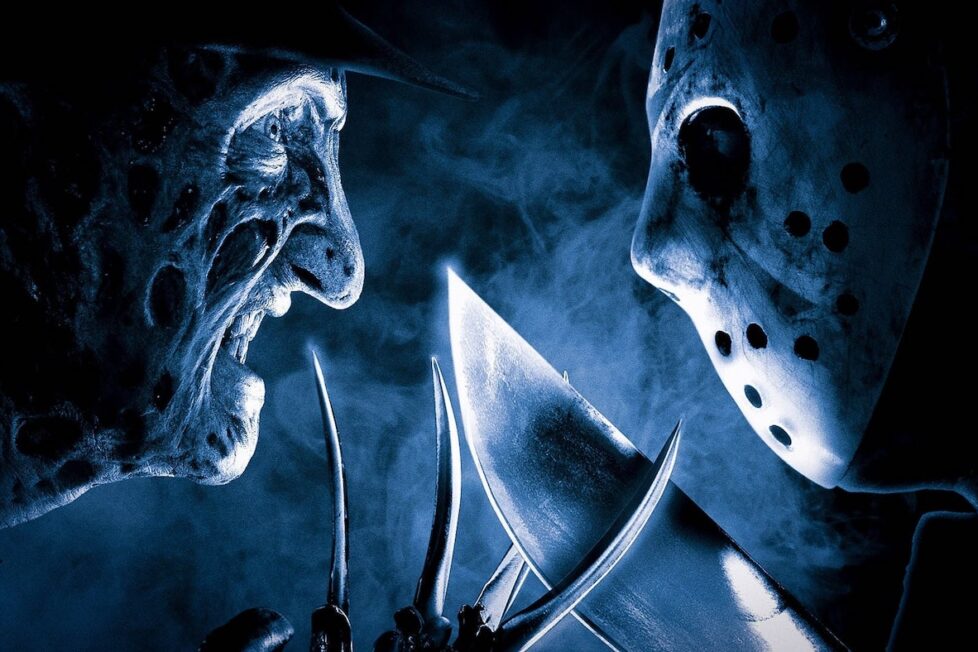
Freddy Krueger and Jason Voorhees return to terrorize the teenagers of Elm Street. Only this time, they're out to get each other, too...


Why do Godzilla and King Kong fight? It’s because they’re monsters. Also, it makes bank at the box office. Freddy Krueger and Jason Voorhees are The Odd Couple of horror cinema. Hell, the two killers cohabitating in an apartment would probably sell tickets. Looking back 20 years, the two icons locking blades was a surprisingly straightforward affair following a decade’s wait after the brawl was teased at the end of Jason Goes to Hell: The Final Friday (1993).
For the fisticuffs to start, Paramount Pictures and New Line Cinema had to shake hands, and talks went as far back as 1987. For perspective, A Nightmare on Elm Street 3: Dream Warriors (1987) came out that year and Friday the 13th Part VI: Jason Lives (1986) had just come out: many people’s favourite of their respective sequels, widely praised for perfecting each pop-culture icon. Freddy versus Jason was the obvious next step for slasher fans, but each studio was making serious bank flying solo… so why cash in and only get half in return?
Six years later and the studios were all but done milking those franchises. Final Friday had done abysmally, and Freddy’s Dead: The Final Nightmare (1991) may have achieved the highest opening weekend yet for Freddy but it fared terribly with audiences and critics. An open secret within Paramount is how they only tolerated Friday the 13th for financial reasons. New Line Cinema, on the other hand, owed their success to Freddy and fostered a creative partnership with Wes Craven that led to him returning to direct New Nightmare (1994).
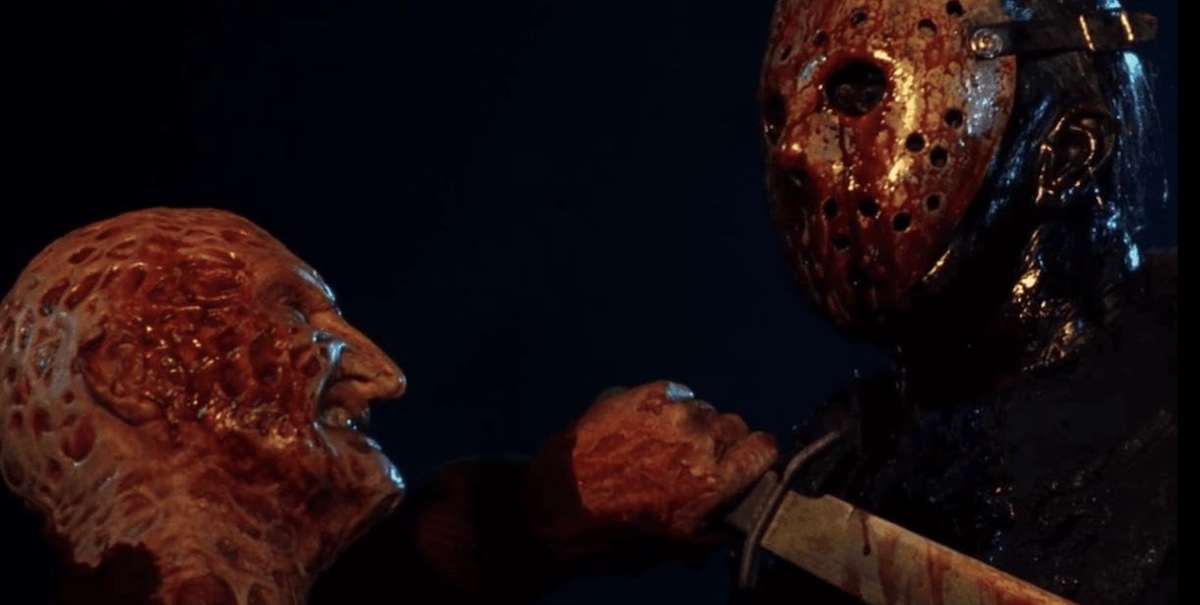
Paramount relented Jason’s rights to New Line, but not the classic Friday the 13th title, hence why the two later sequels were titled Jason Goes to Hell and Jason X (2002). With New Line in full control of both horror IPs, it only took a dozen writers, 18 unused screenplays, and $6.8M to get Freddy vs. Jason onto the screen. The production budget was $30M, so now they just needed a good idea…
A revolving door of screenwriters pitched treatments and wrote and rewrote scripts throughout the 1990s. Enough history to fill a book, Slash of the Titans: The Road to Freddy vs. Jason is 247 pages of one studio resolute in achieving their cinematic Rumble in the Jungle. Some highlights include… Lewis Abernathy’s Nightmare 13: Freddy Meets Jason, with the two sparring in Hell inside a boxing ring with entrails as ropes, featuring Hitler in the front row with Ted Bundy officiating until shot by Lee Harvey Oswald… Brannon Braga and Ronald D. Moore’s Jason vs. Freddy, with Jason getting shot in a courtroom allowing Freddy into our world while unconscious… and Peter Briggs wrote about the Voorhees family living on Elm Street and helping kill Freddy, so Jason then drowned in a nightmare and an FBI agent goes back in time to ensure Freddy sees prison which erases both movie’s timelines. Maybe you prefer Cyrus Voris and Ethan Reiff’s Freddy vs. Jason: Millennium Massacre, where Freddy molested Jason?
Mark Swift & Damian Shannon were the lucky victors with David S. Goyer trimming down their 120-page script. The most notable element cut was Pinhead greeting them in Hell at the end. New Line Cinema wasn’t up for buying the rights to Hellraiser (1987) just for one cameo!
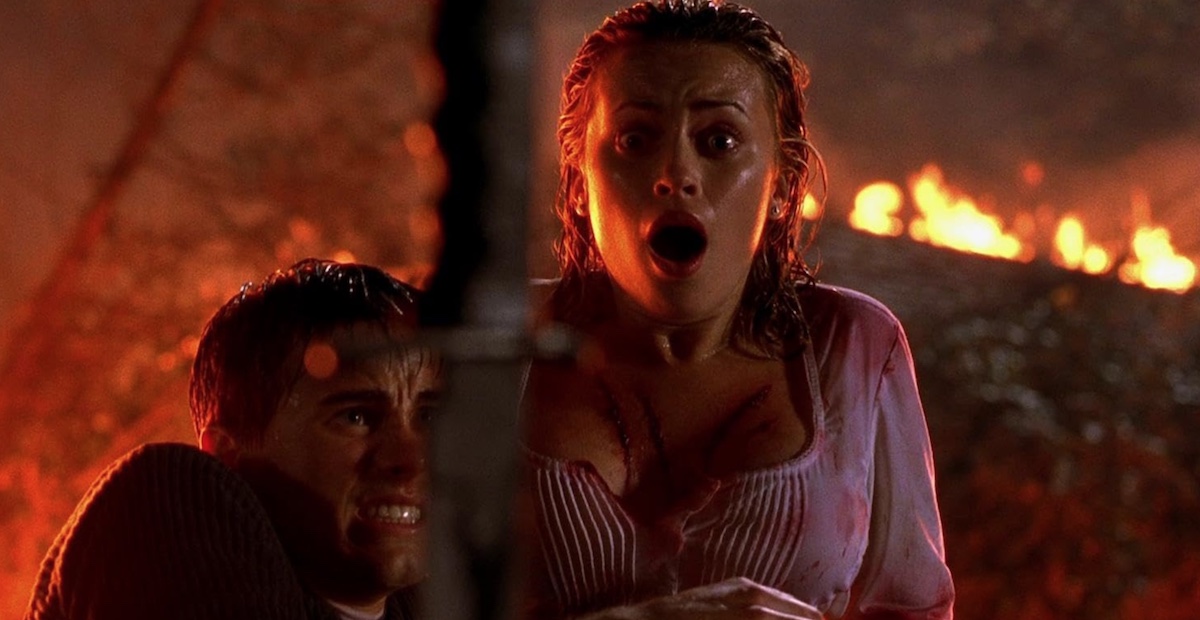
Ronny Yu directed after his savvy reboot of Child’s Play (1988) with Bride of Chucky (1998), but immediately admitted he’d never seen a single Freddy or Jason movie. But as Friday the 13th co-creator Sean S. Cunningham would later confess, “They never had stories before, so why should we give this one a story now? It will just confuse audiences.”
The sheer tonnage of paper thrown away in pursuit of a working script shows in every line of dialogue. Freddy’s opening monologue lays out his entire motivation leaving zero mystery or intrigue. Nobody fears or remembers Freddy (Robert Englund) any more, so he wakes up Jason (Ken Kirzinger) to kill people living on Elm Street. Adults then fear Freddy’s back and teens learn his name. Jason is soon strolling into Springwood right after a campy gore-splattered title card promises this partnership won’t last.
Freddy provides a running commentary for simpletons; grumbling to himself after a teen runs away dubbed yelling “I’m okay! I’m alright!” and whining about his disobedient lapdog to another. This dialogue is purely for the audience as there’s no reason to explain this to a kid he’s about to kill a minute later. Jason is self-explanatory after leaving a fiery trail of corpses through a cornfield rave. Yet someone recaps his backstory, and then we witness his origin story later still.
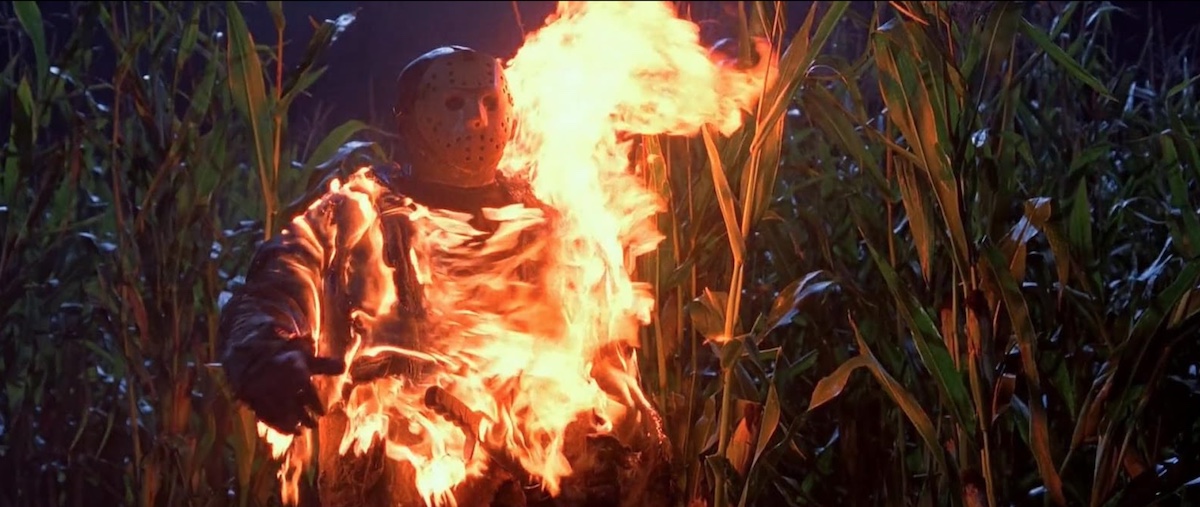
Regurgitating the story beats ad nauseam is time away from fleshing out the most cookie-cutter stereotypes waiting to be cut up. The nebbish nerd, the ditzy drunk girl, the black musician-turned-actress, and the stoner so blatantly a Jay and Silent Bob knock-off that Jason Mewes even cameos as a joke in the documentary Never Sleep Again: The Elm Street Legacy (2010). Their few social interactions capture the millennial zeitgeist of “fuck, marry, or kill, your choices are The Three Stooges.”
The two leads bring a good amount of charm, led by Lori (Monica Keena) and Will (Jason Ritter), with the latter falsely committed after witnessing Lori’s dad murder her mother. It’s the one plotline with an ounce of intrigue. Props to Keena for the incredible heavy lifting of the dumbest exposition, too: “Freddy died by fire, Jason by water, how can use that?”
Lines like that simplify the tricky balancing act of representing both icons equally. Able to speak, Freddy drives the narrative with his machinations on his home turf after “my children”. Freddy vs. Jason serves as Englund’s swansong and shows a wider range of emotions than most of the cast, even if every expression is punctuated with “bitch”. Jason is a walking plot device, an unstoppable bulldozer which was physical energy defined by Kane Hodder’s past four performances. Fans protested that the 6’4 Kirzinger replaced Hodder to simply tower over 5’8 Englund. The height advantage comes at the cost of a less aggressive, more lackadaisical portrayal.
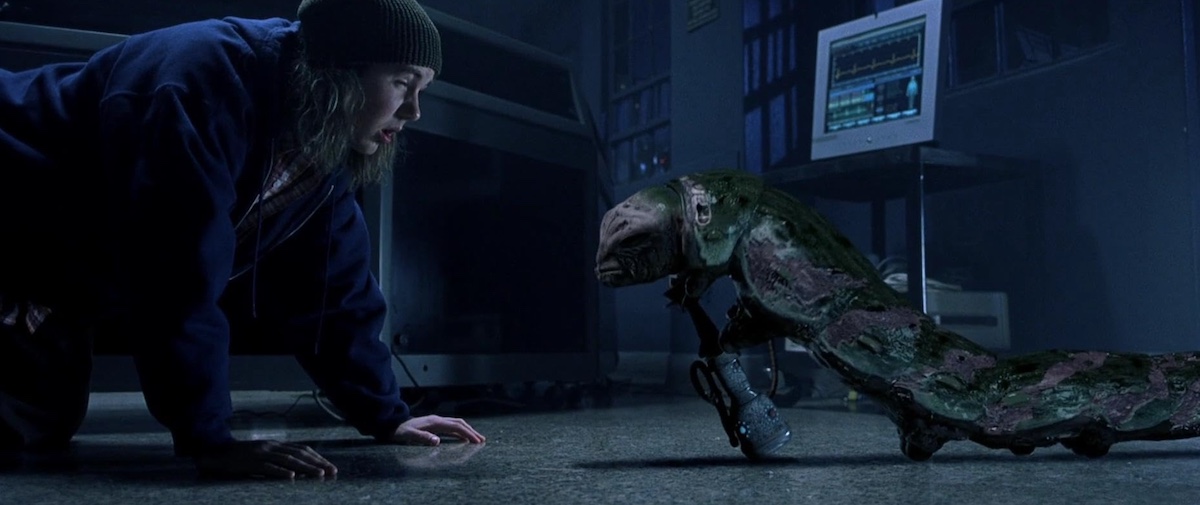
Jason’s pure Id drive leads to some clumsy plotting. Did Freddy direct him to sneak into Lori’s house and only kill one person in bed? Why did he break into the psyche ward to attack only the main cast?
Jason comes and goes when the story requires, but he makes up for it in quantity over quality. Slaughtering 19 people total, the real confrontation begins when Jason cuts short one of Freddy’s nightmares. That pisses Freddy off given he only kills a single teenager in this entire film. Freddy may be the talk of the town but his plan has left him with all glory, no guts.
Decapitations, bisections, electrocutions, and a guy folded like a pretzel make for the goriest Freddy or Jason film yet… but it’s not a particularly scary horror film. Fleeing Jason can be heart-pounding and Freddy conjures one or two unnerving images, but Yu isn’t interested in sustaining any sense of dread. Freddy vs. Jason relies lazily on shallow jump scares or veering into gross sexual assault jokes.

Freddy eventually wants Jason gone and knocks the big lug out with a hefty dose of tranquilisers and a CGI bong-smoking Freddy caterpillar. Don’t ask! Round 1 of this grudge match and Freddy has a home advantage in the dream world. Even sleeping Jason appears indomitable, flung across Freddy’s boiler room complete with pinball sound effects, but he won’t stay down. As bluntly put by Lori earlier, fans have long criticised Jason’s aversion to water considering he’s always lived in and around Crystal Lake. The film explores what drives this monster, driven by others such as his mother or Freddy, that little boy who drowned long ago is still deep in there.
As Craven put it when he saw the premiere, “There’s nothing that brought it up to the level where you could feel this was about some important human issues, aside from just two men smashing each other.”
And smash they do. Round 2 and Lori knocks herself out to grab Freddy and pull him back into reality. Freddy realises Jason is right behind him with a nearly audible gulp, and that anachronistic Three Stooges reference becomes a setup that pays off big time. Freddy tries kicking Jason in the dick and Jason responds by smashing him through every window and out through the ceiling. Freddy channels Wile E. Coyote in trying to push a giant cart down a ramp and appropriately ends up swinging upside down on a runaway wrecking ball screaming “OH NOOO!” as he swings toward Jason.
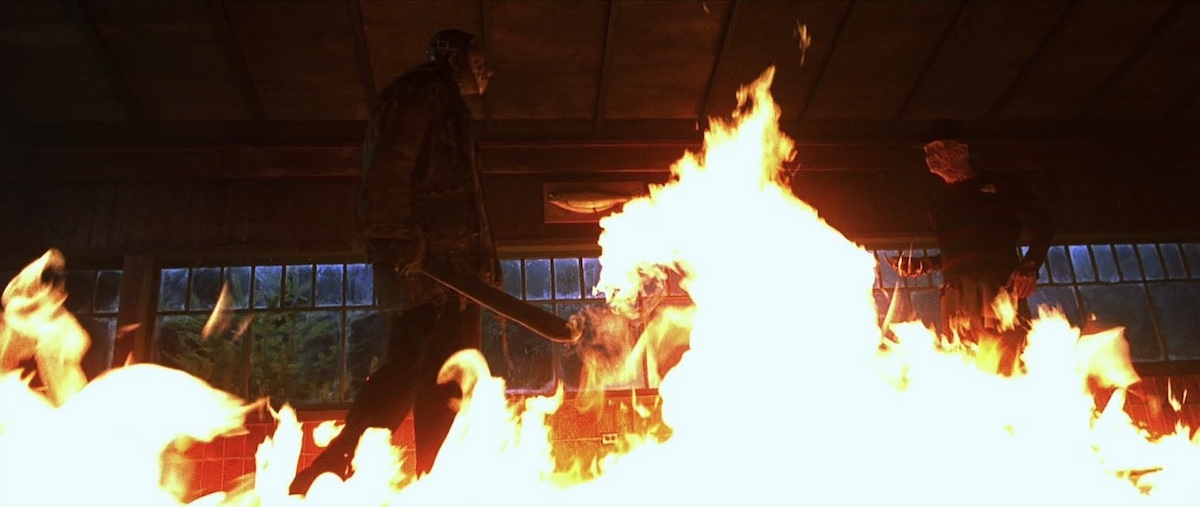
The marketing campaign prepped us for this ridiculous tone as the two slashers had an official weigh-in at a Las Vegas event. Freddy trash-talks the mute Jason, whose translator can only respond with “no comment.” Earlier drafts from other screenwriters aimed for this level of silliness because who was ever going to take a film called Freddy vs. Jason seriously? Rating this movie solely on its climactic battle, it earns a Dave Meltzer six stars. But like wrestling, the build should be considered alongside the match itself. Freddy vs. Jason is often twiddling its thumbs, like the audience, waiting for the real action to begin.
What people most care about is the end result and who came out on top. Both won as Freddy vs. Jason made $116M at the box office. Its $30M production budget was what most past entries prayed for at the box office! A sequel made sense but the prospect of another decade of rewrites meant it only led to a Freddy vs. Jason vs. Ash (from The Evil Dead trilogy) run of comics. There were scares in all the past films, but audiences always wanted entertainment, and this film was actually a fitting end to both 1980s franchises. Ironic given Freddy vs. Jason ends with both slashers proving themselves immortal.
CANADA • USA | 2003 | 98 MINUTES | 1.85:1 | COLOUR | ENGLISH

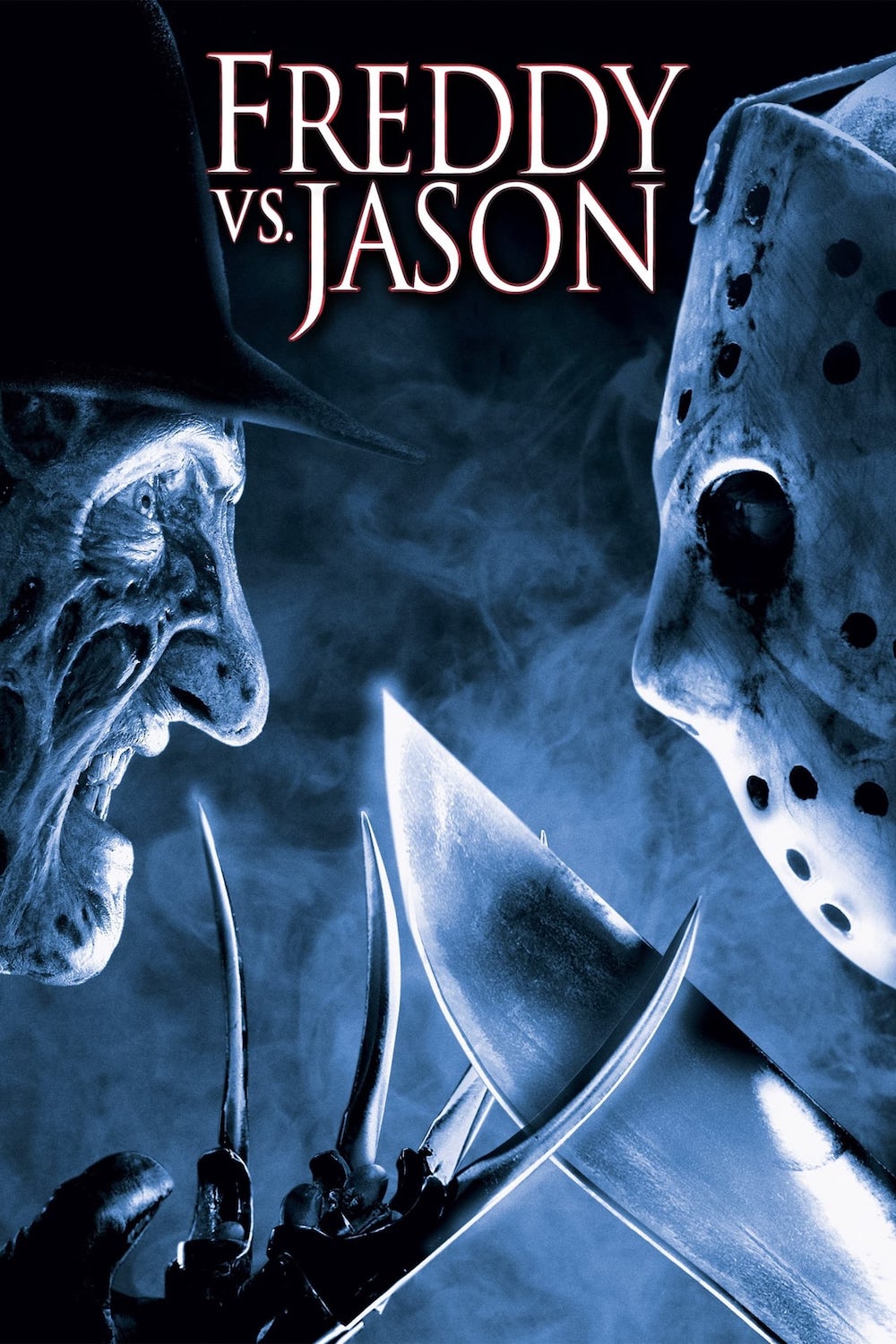
director: Ronny Yu.
writer: Damian Shannon & Mark Swift (based on characters created by Wes Craven & Victor Miller).
starring: Monica Keena, Jason Ritter, Kelly Rowland, Chris Marquette, Lochlyn Munro, Kyle Labine, Ken Kirzinger & Robert Englund.
